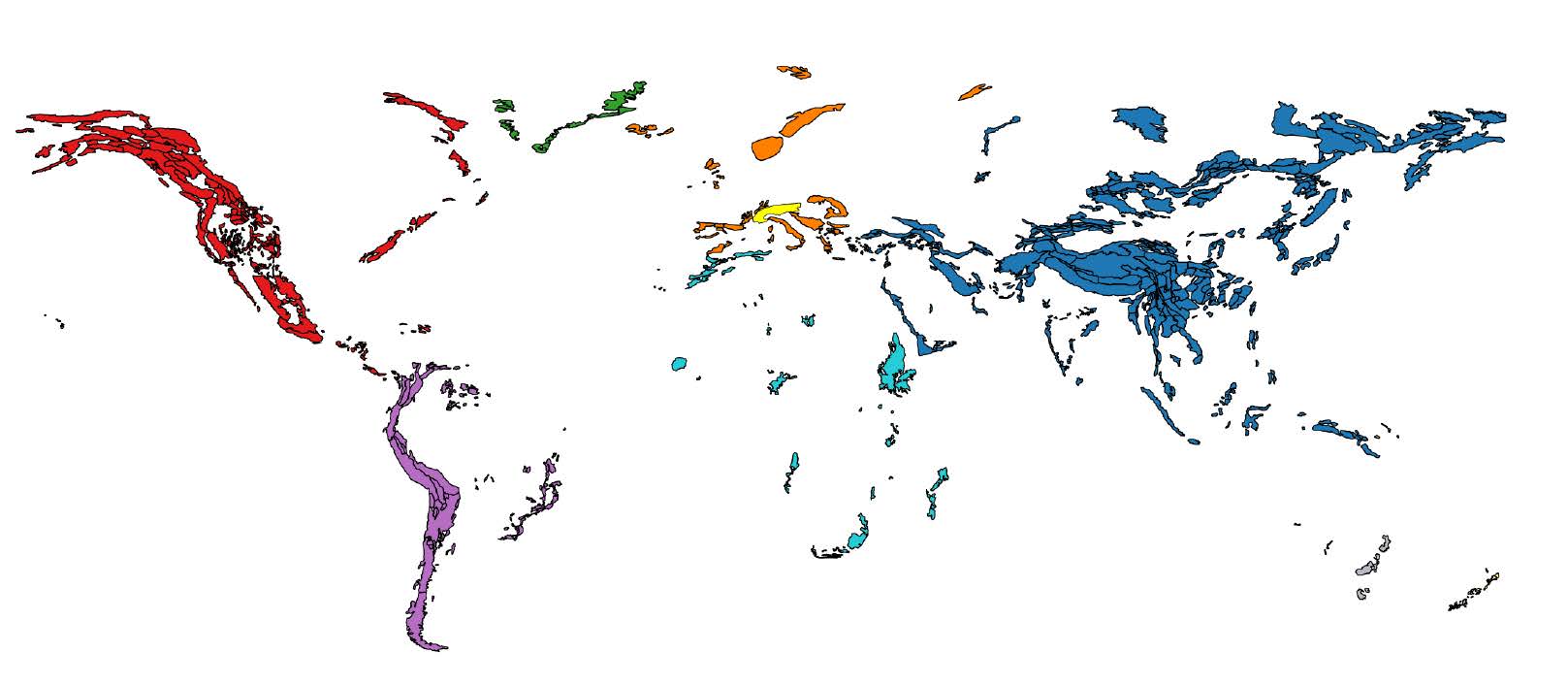GMBA mountain inventory published in Alpine Botany
The Global Mountain Biodiversity Assessment (GMBA) publishes a global inventory of mountains for bio-geographic applications
Comparative research in mountain biodiversity and conservation planning has been constrained by the lack of a standardized delineation and environmental characterization of the world’s mountains.In that context, the spatial placement of inventories mobilized from the literature and the determination of expected species occurrences following expert-based bioclimatic associations have turned out to be particularly challenging.
In a new paper freshly published in Alpine Botany, Christian Körner and co-authors provide a first version of a much needed inventory of the mountains of the world. This inventory rests on the GMBA definition of mountains, which, as is shown in this paper, appears as the most pertinent in a biogeographic context. Each of the 1003 entries corresponds to a polygon drawn around a single mountain or a mountain range and includes a local name as provided in major published maps and atlases, geographic coordinates, the total polygon area, and the area of mountainous terrain within polygon subdivided into bioclimatic belts. Additionally, and to illustrate the broad utility of this inventory, we also report on human population densities in mountainous areas.
The polygon-based mountain inventory of the world described in this paper is a unique information layer that is now available on our online Mountain Portal.
Despite the drawbacks associated with the human population data, their availability and the resulting climate co-defined livelihood statistics are a goldmine for the mountain biology and ecology community. These data open up the avenue for many interesting socio-ecological research questions, including the estimation of ecologically important regional demands for natural resources such as firewood or grazing land and of current and future pressure on e.g., medicinal plants.
The article is an open access resource and both the supplementary material and the inventory shape files are also available for unrestricted download.

